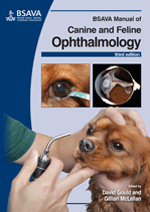
Full text loading...

The ocular examination is an extremely rewarding procedure for the examiner because the eye lends itself to visual inspection like no other organ and often allows an instant clinical diagnosis to be made at the time of consultation. This chapter looks at technique; equipment, examination with ambient illumination and without instruments; Schirmer tear test; sample collection; vision testing and neuro-ophthalmic reflexes; ophthalmoscopy; slit lamp examination; external staining techniques; fluorescein angiography; tonometry; gonioscopy; retinoscopy; electroretinography; ocular centesis.
The ocular examination, Page 1 of 1
< Previous page | Next page > /docserver/preview/fulltext/10.22233/9781910443170/9781910443170.1-1.gif

Full text loading...









































